Note: I’m slipping! I initially identified this as one of the mystery Chinese pistols, having not recognized it as a Bernardon-Martin. A bunch of folks in the comments did, though, and I have corrected the post.
A reader named Liliang sent me these photos of a pistol from a Chinese museum (the specific museum or its location was not mentioned). It is a Bernardon-Martin model 1909, although the exact details don’t quite fit any of the variation I can find documented.
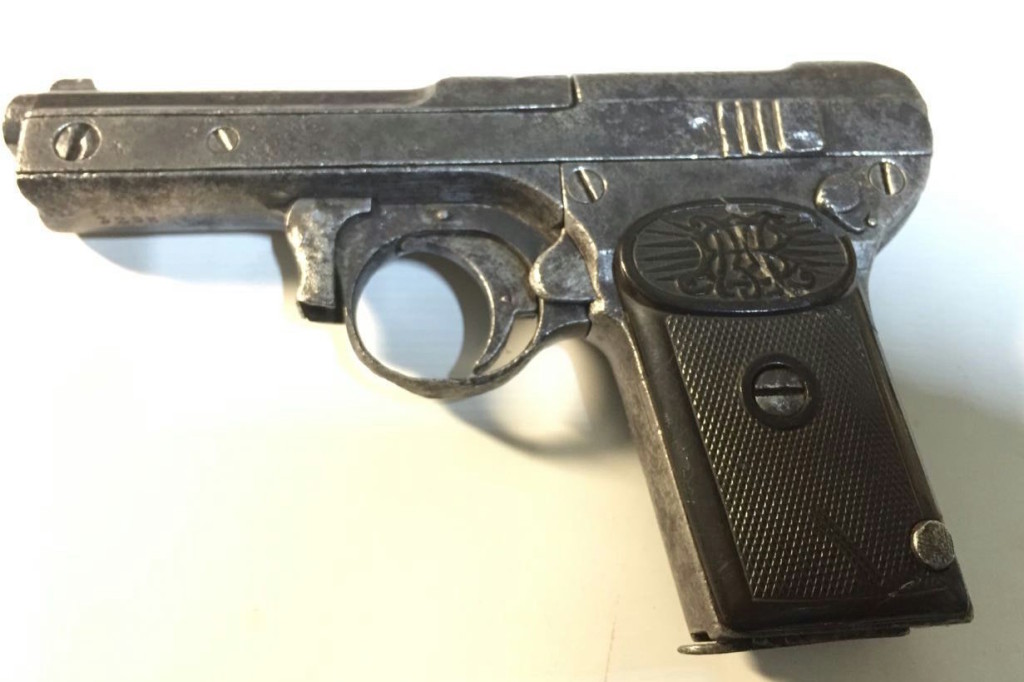
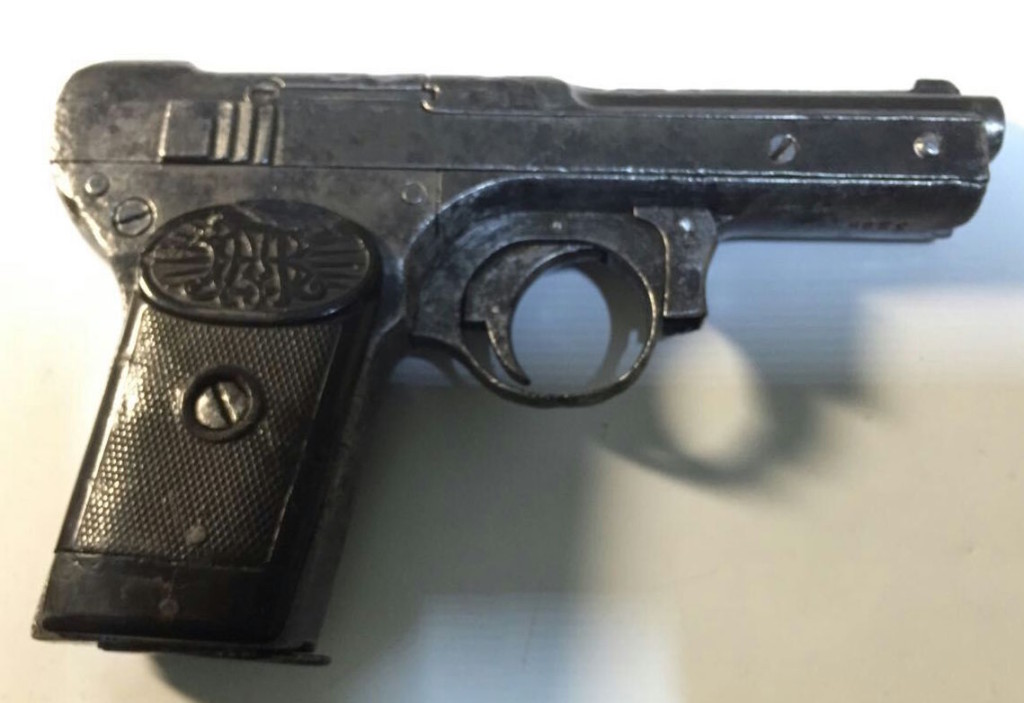
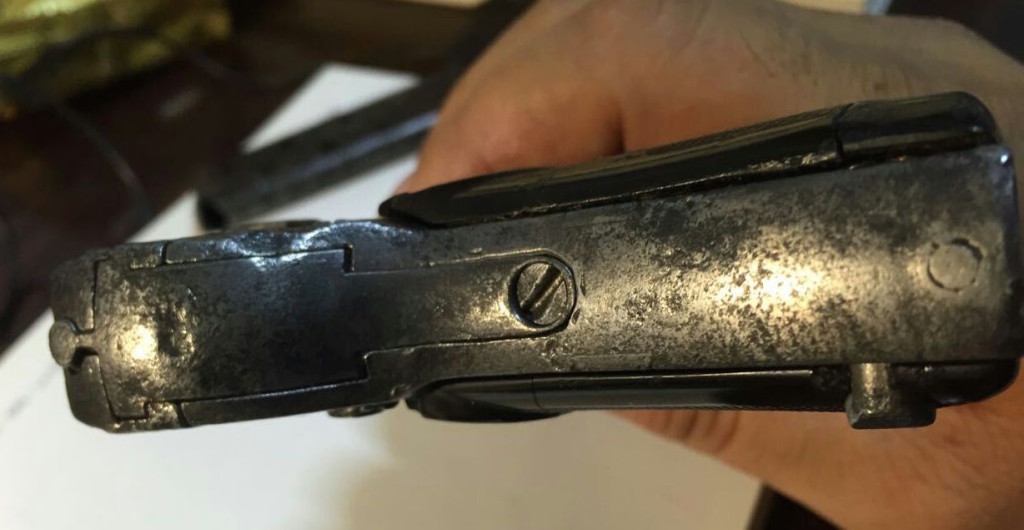
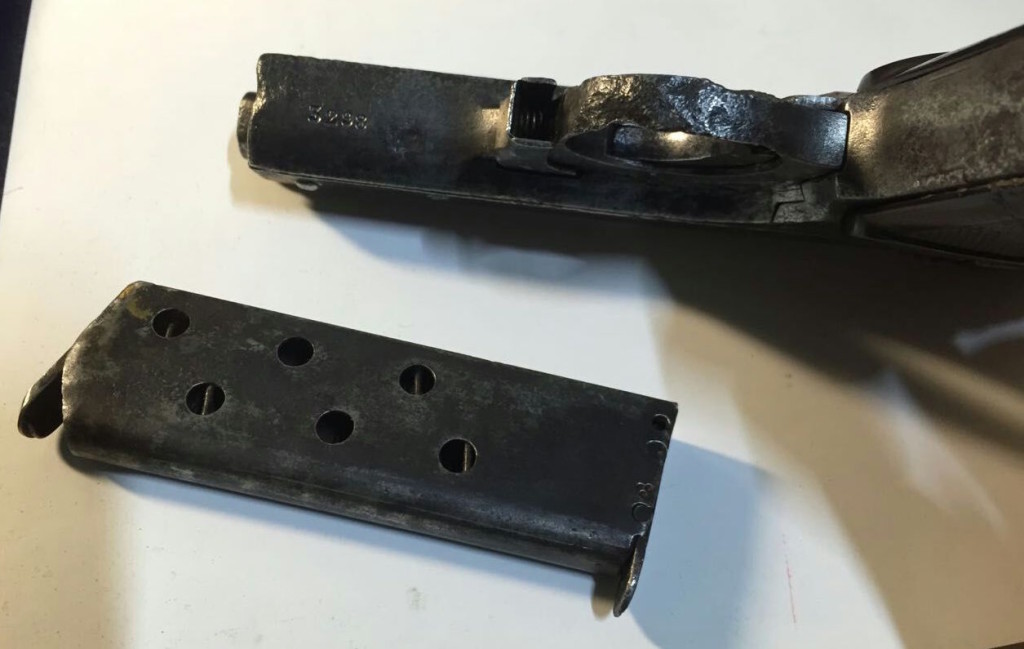
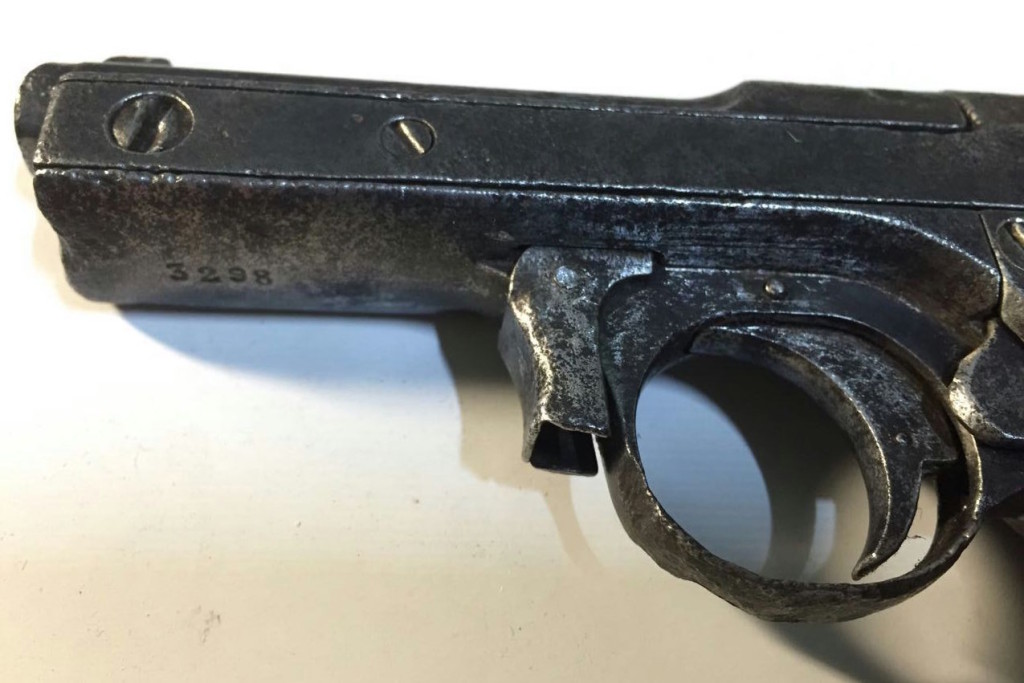
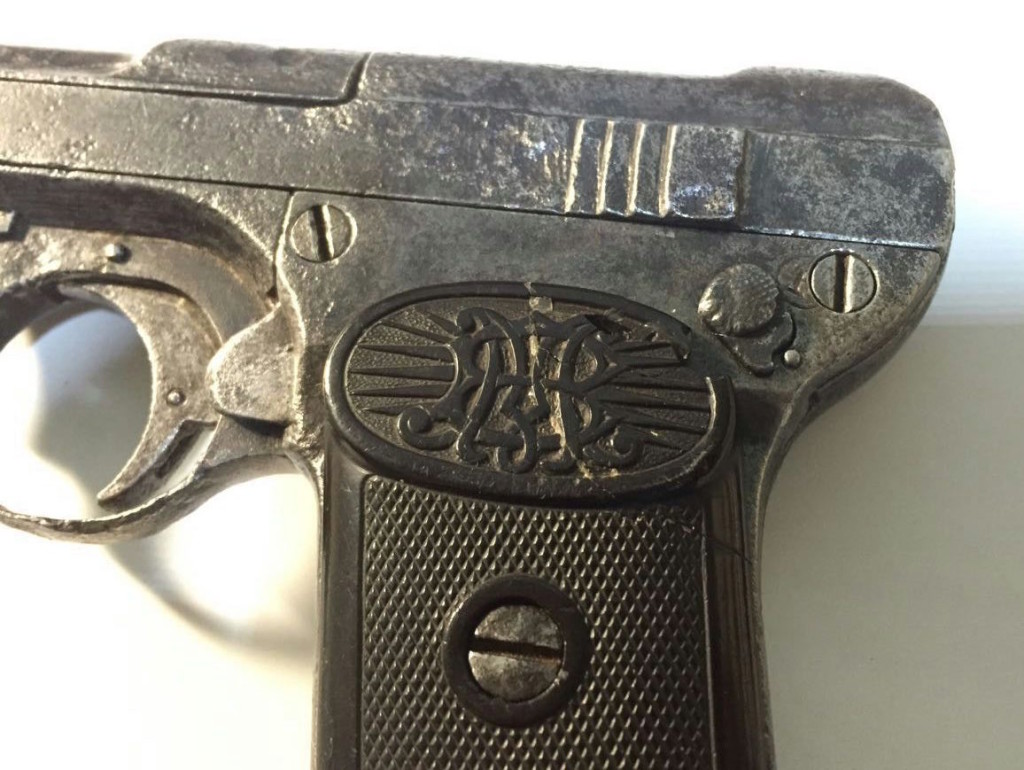
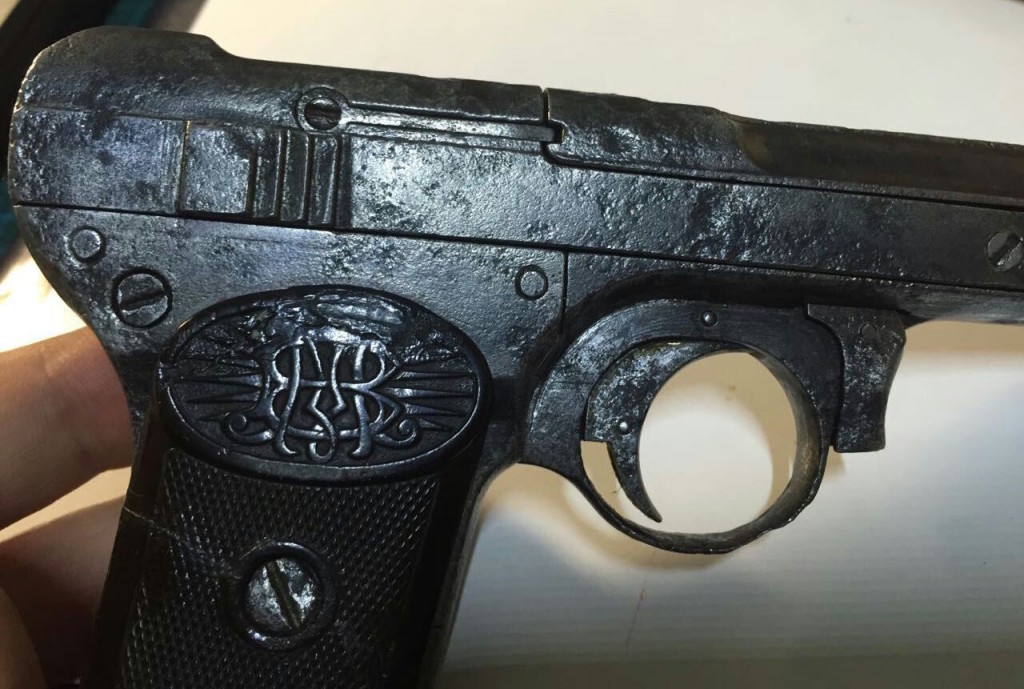
.


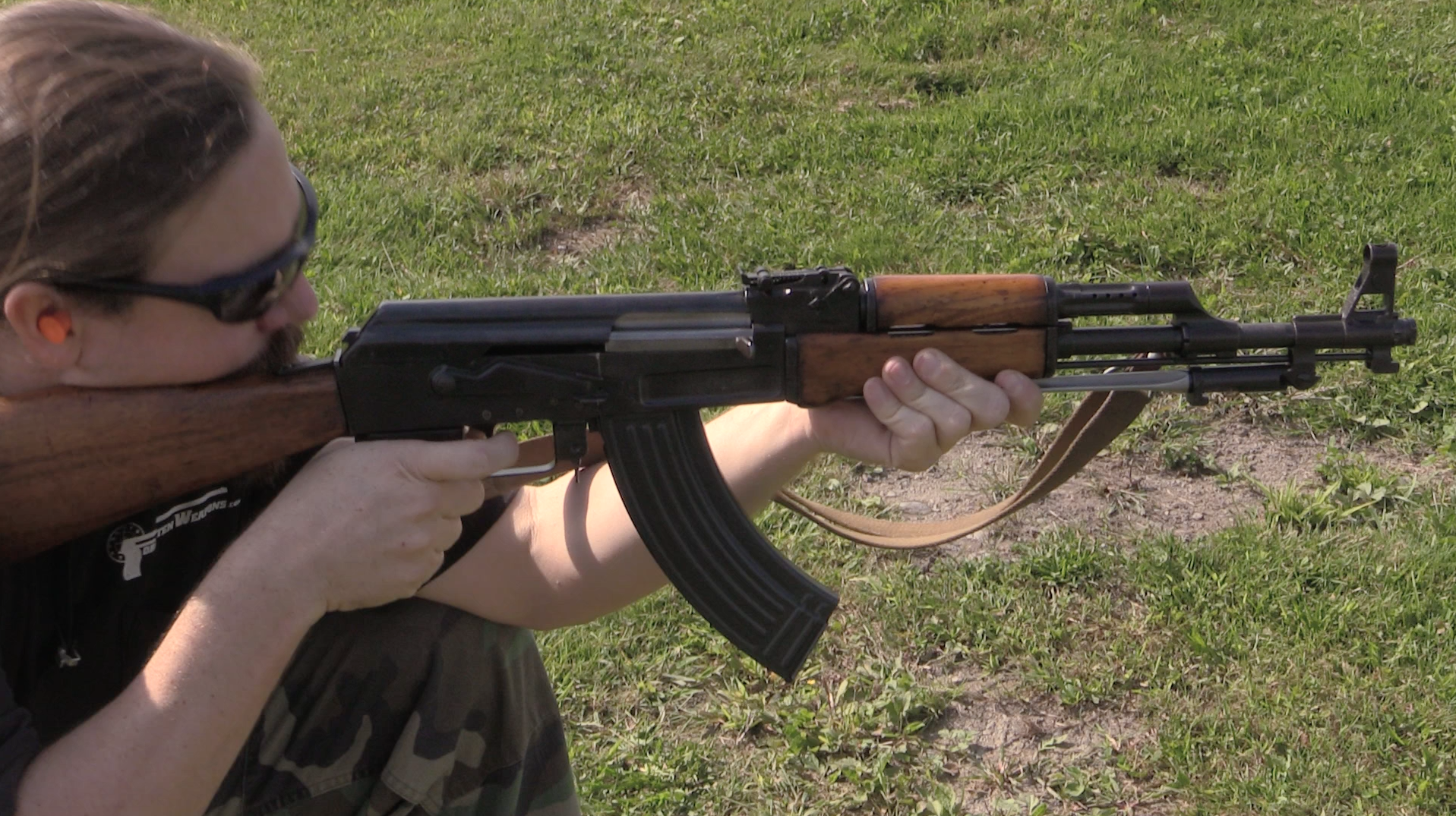
Hey Ian a very interesting pistol indeed It looks like its based on a Bernardon Martin. The few true Bernardons that I have seen (on various online auction sites and even in past Rock island auctions) have been In very similar condition. I have been looking to add one to the collection for a while but have yet to find one in functional condition.
Anyway the lever you mention is supposedly a slide lock. You would squeeze the lever and pull back the slide and the lever would catch recoil spring retaining block and lock the slide open.
Heres a link to a grate article on them.
http://unblinkingeye.com/Guns/B-M/b-m.html
I always love these oddball Chinese pistols.
Thatcher
Do you think it is a Chinese copy of said Frenchie shooter then?
I’m not sure but none of real French Bernardon Martins I’ve seen or can find photos of on the internet look quite like this one. If you look at the placement of screws and the overall look It doesn’t match up with any I can find. However Like I said before the condition is very similar to those I have seen in the past which were being sold as straight Bernardon Martins.
Thatcher
I can see what you mean about the screws, from looking at a limited amount of information.
It’s location in China, Museum type etc might help I.e. Was it somewhere that French folk went, or traded with etc.
“Apparently the left-over parts were mixed, because Casanova states that some Hermetic pistols have a single screw at the front of the slide, while others have two. The one reproduced in Hogg & Weeks has a single screw.” I’ve seen a picture with two screws, but next to each other.
What do the screws do? “These particular screws” Hold the slide to the frame/compress the recoil spring. If the screw/s were at the muzzle end that would make sense, this one in China has a second screw further down- Were the spring would be? So it can’t pass right through, I wouldn’t have thought.
There’s a disassembled picture on the Unblinking eye link, the recoil spring has a end cap with a hole through it. So maybe a screw passes through this, in this Chinese model the screw furtherest from the muzzle must compress the spring via the above, it might be long enough just the spring may sit inside a hole in the frame somewhat it looks quite long.
Maybe that means it’s captive, on this “later” model, in that disassembly is via the front screw. And the spring stays attached to the slide, although how would you remove the slide. Odd, maybe it is a copy and the second screw is just a comestic additional- Not really a screw, passing straight through etc.
You could remove a “captive” one, if the front of the frame was open I think. But it is closed on the picture used for reference.
Hmmm, can’t do really… The slide probably comes off from the front, hence the screw being the retainer.
Most likely a copy, although I’d venture that any sixth grade shop class in Peshawar could do a better job (assuming they have grade schools there).
Wow! I think that may be a real French Bernardon Martin 1907 and not a Chinese copy.
“Bernardon Martin 1907”
I used google and found description in English: http://unblinkingeye.com/Guns/B-M/b-m.html
I would say that according to above link that this example is in fact Model 1909 Bernardon (derived from Bernanrdon Martin) as slide lock lever in front of trigger guard can be seen.
“When the trigger is released, the tongue flips up enough to allow it to pass beneath the crossbar and engage the connector again. Until the trigger is released, it is effectively disconnected from the sear.”
So it’s an anti drop device safety, I think.
It doesn’t fire, untill you release the trigger?
Info from A.B.Zhuk:
Bernardon Martin. From 1905 to 1909 some variants were produced. For one variant special high-capacity magazine in horseshoe shape was constructed.
See illustration 49-1 and 49-2 here: http://www.earmi.it/armi/atlas/270.htm
Technical data from http://mgou-obl.narod.ru/pist/p2-3.htm
Caliber: 7,65 mm [.32 Auto]
Length overall: 150mm
Length barrel: 95mm
Weight (without cartridge): 680g
Capacity: 7
Blow-back
This has a serial number of 3298, so it’s a late/later third model I reckon. Going off that info on the Unblinking eye link.
“The magazine on the second and third variant is of conventional design, with seven holes in either side for viewing the cartridges, and an additional hole on the right side for the latch. It holds seven rounds.” This one has six holes.
Whether the pistol is a genuine B-M or not (I call the odds six-five and pick ’em), the magazine could be a “locally-made” replacement.
cheers
eon
http://www.academie-des-armes-anciennes.com/mag14.html
Hey well identified “Thomas Martin called the double safety catch. A button maintains the charger” that’s a English translation from the link you posted.
“Patent as a breech-locked mobile fork. A charger 7 shots slides into the handle and is held by a hook. The optional safety blocks the trigger but not the head, which can be dangerous in case of fall.” Thats another perhaps dubious Google translation, of the French in the link. So it would appear to be some sort of safe action pistol.
http://bases-brevets.inpi.fr/en/document-en/FR359992/publications.html?p=5&s=1468335557293&cHash=a010eb8ddd3896c449f7410c49bcede6
Patent.
You will probably get a ton of responses saying that the mystery lever in front of the trigger guard is the slide release. Looks conveniently placed with no other sign of a release in any other place that you can see in the photos.
George
http://world.guns.ru/handguns/hg/de/mauser-1910-14-34-e.html
Below is a quote from the link above about disassembling a 1910/14:
“depress the small retaining latch located on dustcover below the barrel to release retaining rod”
That feature appears to be missing from this Chinese pistol, so perhaps the spring loaded lever in front of the trigger guards function is to do with disassembly.
Another quote from the link above:
“Slide hold-open device is installed in pistol, but once slide is caught open, it can be released only by insertion of a fresh magazine.” The lever behind the trigger might be a manual slide release. Apparently you need the magazine to be inserted into a real 1910/14 to disassemble it… So a manual slide release might be a domestic improvisation/improvement to negate the requirement of a magazine needing to be inserted, inconjunction with the new disassembly method I.e. The lever infront of the trigger. Not sure how, if at all, having a look into it currently. I think the Chinese pistol has a heel release for the mag, the 1910/14 has a “fancy” safety if I remember off here… Which is located were we put the mag release now, it’s in two parts also I think, you press the “mag button” in for on, and use the “what looks like a modern decocker” to knock it off, something like that, anyway a pistol based on it would likely enough have similar unconventional features.
I like that safety on the Mauser 1910/14 actually.
That looks like some serious corrosion. It reminds me of 1911 pistol I found in the middle of a river under the outer edge of a bridge (severe drought – the water level had gone far down and exposed it). The trigger, slide, and every other moving part was seized.
Perhaps it wasn’t made out of very good metal originally, more iron or something. Maybe indicating it wasn’t made in France.
Some people get all of the luck [/envy]
😉
The possibly lucky ones would have been the police. I didn’t pick up the gun or even touch it, I called the police and let them do their thing, since we can all probably guess why a gun might have ended up at the bottom of a river. (as it was early morning on a popular jogging path, I originally thought the gun might have been thrown off the bridge the night before — rather than [apparently] years ago) The cop strained and fiddled with it for quite some time, before finally giving up and taking it away as-is (possibly loaded, chambered, cocked, & trigger-released). The whole thing was interesting to watch.
There were many firearms made in China by local shops (blacksmiths?). I remember an article in (maybe) Shooting Times about them. They had copies of a Mauser rifle, and a 1903 Springfield that had been copied right down to the markings on the receiver, and the serial number. Very crude, but most likely functional. They were afraid to fire it.
we always solved that conundrum by tying the rifle or pistol to a tree and pulling the trigger with a string for a few shots to make sure it was safe… lol..
ARGH! If this Bernardon-Martin pattern continued, it probably would have evolved into something like a Beretta Cheetah (without hammer bite risks).
Improvements for this gun would probably include the replacement of the hold-open lever with a Browning-style external slide-lock release and a much more ergonomic grip… Or am I wrong?
Very interesting sample of pocket pistols of their first introducing age. Nearly all parts engagements, including take down process, had been made through screws. The “U” transversal sectioned slide seems taken out from the rear after unscrewing the recoil spring guide/slide blocker stop and the dolls head shaped striker compressor support at rear of top of the receiver. Inventors seem tried various kinds of screw and pin combinations to accomplish the take down. The lever af left behind the trigger seems functioning as the trigger bar but working as a safety through an unknown form at the same time. Trigger bar and sear disconnection seems working in a very primitive slip off type of escaping, once at every trigger pull kind. Related patents show, inventors positively improved the pistol in later model mostly discarding the screw engagements. This Chinese museum sample looks a badly worn original initial model of pistol of slide front engagement experiments through screw combinations.
The expertese shown in these comments, as usual, is amazing. What a fine group of readers.
THIS CHINESE PISTOL IS LETHAL,OLD,AND MAYBE LOYAL AT HIS/HER OWNER.
Your feedback helps me a lot, A very meaningful event, I hope everything will go well